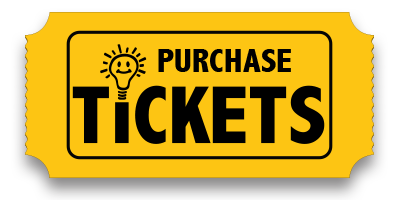Three Billy Goats Gruff
Once upon a time, the Shenandoah Valley Discovery Museum visited the world of The Three Billy Goats Gruff, where we told stories, built boats, and learned about things that sink and float. Below are activities that are all connected to the Three Billy Goats Gruff. These activities include things that will help your child develop fine and gross motor skills, problem-solving and engineering skills, and can help them engage in cooperative play, while fostering creativity and perseverance. Each theme also comes with recommended literature and movie connections. Feel free to throw in your own activities that might relate, and don’t forget to post your results to social media and tag @discoverymuse to share with everyone else!
Virtual Farm Tour
Our adventure begins with a tour of Miss Storm’s farm, where we meet goats, learn about what they eat and how to care for them, and even get to participate in milking them.
Now that we know a little more about our heroes, the goats, let’s listen as Dr. Diane tells us the story of The Three Billy Goats Gruff.
Story Skeletons
Just like the story you heard, you can also tell a story. All it takes is a story skeleton and your imagination. A story skeleton is the bones of the story — it’s the important elements (Trip Trap, Trip Trap, a troll living under a bridge, three billy goats) that need to be in the story. Everything else is up to you. You can add voices. You can change the place where the story took place. You can add a surprise twist at the end — maybe the troll turns out to be a good guy. It’s totally up to you.
The Challenge:
- Pick one of the story skeletons below. Make sure you know the main parts of the story.
- Think about extra details you want to add in — these are the things that make your story fun. What makes your characters stand out? Do they have funny voices? Do they live someplace different or strange like the moon or Antarctica?
- Play around with the extra details until they are a part of your story.
- Grab props if you want them, just like Dr. Diane did when she told her version of the Three Billy Goats Gruff.
- Practice, practice, practice until you are happy with your story. It doesn’t have to be perfect, just fun and YOU!
- Record your story. If your grown up says it’s okay, please post your story to @discoverymuse so we can be your audience!
No Bones About It:
Storytelling Skeletons
Science — Sink/Float Experiment
So in The Three Billy Goats Gruff, the goats have to find their way across the bridge. For our purposes, we are going to try to find another route for them — across the water. To do that, we are going to first explore the concept of sink and float.
To follow along with this experiment, you will need the following:
- A large pot or storage tub filled with water
- A towel
- Various items you find around the house (toy cars, rocks, small balls, toothpicks, spoons, clay, buttons, corks, etc.)
- Two index cards — one labeled SINK and one labeled FLOAT
- The sink/float graph (see below or make your own)
Instructions for Sink/Float Experiment
- Lay out a towel under the tub or container of water. On one side of the tub put an index card for things that SINK and on the other side of the tub put an index card for things that FLOAT.
- Place one item into the water at a time. Does it float or sink? Place the object below the corresponding index card.
- Talk about why some objects sank and others didn’t.
- Discuss the weight, size and material the object is made of and how this influences the floating ability.
- Talk about why there were bubbles when some objects sank.
- Search around the house for more objects to test if they can float and sink.
Items sink or float based on their density. Density is a measure of how solid something is, and is determined by how close or far apart molecules are within an item. All things are made up of tiny particles called molecules. If the molecules inside an object are very close together, the item is solid, or dense. If the molecules are farther away from each other, the object is less dense, or less solid. An example of a very dense item is a penny. A cork is less dense.
All the objects that were less dense than water floated in the water! A cork, piece of wood, or Styrofoam floated because those materials have less density than water. Objects that were more dense than the water sank. A penny, paperclip, or button sank because the materials they are made of (metal for a paperclip and penny, plastic for a button) had more density than water. (Their molecules are closer together than water molecules are.)
Other Sink/Float Experiments To Try At Home
Art Activity/Fine Motor Activity — Build a Boat for the Three Billy Goats Gruff
In the story of the Three Billy Goats Gruff, the goats needed to cross the bridge and pass the hungry troll in order to get to the other side and eat the sweet grass.
So how do we help the goats do that? We could certainly build them a bridge using cardboard, tape, blocks, yogurt cups, empty boxes, etc. And if you want to try that approach like our friends above did, awesome! Please take a picture of your bridge (with your grown-up’s permission) and share it with us @discoverymuse
BUT, what if we found another way to help the Three Billy Goats Gruff get safely past the troll? Since we’ve been exploring the concept of SINK/FLOAT today, what if we tried to build them a boat that lets them sail safely across the river to the other side.
For this activity, you’ll need the following materials:
- An empty container to fill with water for the river (you can use a wading pool, your bathtub, a kitchen sink, or a large plastic storage container)
- Three Billy Goats Gruff (you don’t need real goats — you can use 3 small rocks or pebbles, three playdough goats that you make, three small ping pong balls, whatever you have on hand. Bonus points if you are able to make them three different sizes).
- Materials for creating your boat (these are suggestions, use what you have):
- Styrofoam
- wood scraps
- cardboard scraps or small boxes and lids
- egg cartons
- paper tubes and straws
- aluminum foil
- plastic containers
- masking tape
- craft sticks
- rubber bands
- bottle tops
- packing wrap/materials
BOAT BUILDING STEAM CHALLENGE
- Create your three billy goats. You can use three small rocks or pebbles, three playdough figures, three plastic animals, whatever you have in the house. Bonus points if you can make your billy goats three different sizes.
- Set up your test river. Fill up your storage container, kitchen sink, wading pool, etc. with water. This is going to be your river.
- The Challenge: Build a boat that will float across your “test river” without getting the three billy goats wet.
- Design a boat that will fit all three of your “billy goats” in it. Using the materials you have gathered, what kind of boat can you make that will support all three of your billy goats and make it safely across the river? You may want to draw a picture of your boat first.
- Build or engineer your boat. As you experiment with the different materials, don’t be afraid to be creative with your boat-making.
- Test your boat in your “river.” Some boats may float and others may not. If your boat doesn’t float, what can you do to change or improve your design. To move your boat across the river, you may want to blow on it using a straw or use a small fan or hair dryer (under adult supervision only) to blow air to push the boat across.
- Redesign your boat based on your tests and try again. You may want to take notes as you test your boat designs. Which boats float and which ones sink? What kind of materials did you use in the boats that float? Does the size of the boat seem to matter? How about the weight of the materials?
Bonus STEAM Challenge Activity — Sinking Ships
Read Who Sank the Boat by Pamela Allen
Collect several small plastic tubs (such as butter or yogurt containers), marbles, wooden blocks, pom-poms, and small toys. Place the empty tubs in your water container.Make a prediction about what will happen when the different objects are placed into the empty containers. Will the container sink or float? Experiment with all of the different materials. What will cause a plastic container to sink?
Physical Activity Farm Animal Races
Get some of those wiggles out while learning a little about the way farmyard animals move. Call out an animal and the way it moves and see if you can make it across the room (or better still across the yard) moving like that animal. We’ll start you off with some animal choices, but feel free to add your own!
Conversation Starters and Research Questions
Now that you know how the Three Billy Goats Gruff story goes, can you write your own version? What if the troll was the hero? What if something bigger and badder than the third billy goat gruff tried to cross the bridge? What if the bridge broke? YOU be the author. Please share your stories with us @discoverymuse on social media.
A Note from Mr. Mark:
For many years in my early childhood career, the children and I would write and illustrate our own books. The results were awesome and often hilarious. It is easily done with an adult
being the facilitator and the storytelling created in a ‘round robin’ fashion. The facilitator’s main job is to gently edit and guide, avoiding repetitions and helping with logic where needed. Otherwise it’s all written by children.
After you finish writing, then you can divide the story up into scenes and have the children then illustrate that scene. You can then print out, copy, compile and publish your own books and stories.
Tip: The facilitator, after every addition, should reiterate the story back to the children in an ‘our story so far’ fashion. This helps with continuity.
What to write about? One of our all time favorites has been the Fairy Tale sequel. For instance, what did Goldilocks get up to after that whole 3 Bears incident? Did Rapunzel ever cut her hair to avoid trouble? You get the idea…..
| TheThree Billy Goats Gruff Part 2 Or ___________________________________________________ One day, about a year after the unfortunate Troll Bridge incident, _______________________________________________________________________________.The__________________said,_______________________________________________________________________________________________________________Meanwhile,______________________________________________________________________________________________________________________________Suddenly________________________________________________________________________________________________________________________________Then, the______________said______________________________________________________________________________________________________________After that, then_______________________________________________________Mama Billy Goat _____________________________________________________ ____________________________________________________________________Then, all of a sudden, _____________________________________________________________________________________________________________________ After that, _______________________________________________________________________________________________________________________________Baby Billy Goat Gruff _____________________________________________________________________________________________________________________Finally__________________________________________________________________________________________________________________________________ That’s all there is to it. Now, as the story develops from the children, the facilitator can change the leading trigger words to better match the story. But this is the basic format and provides a lot of fun. |
And they all lived happily ever after!
Did you enjoy this activity? Let us know here.
If you are able please consider making a donation to sustain our non-profit museum through this uncertain time


